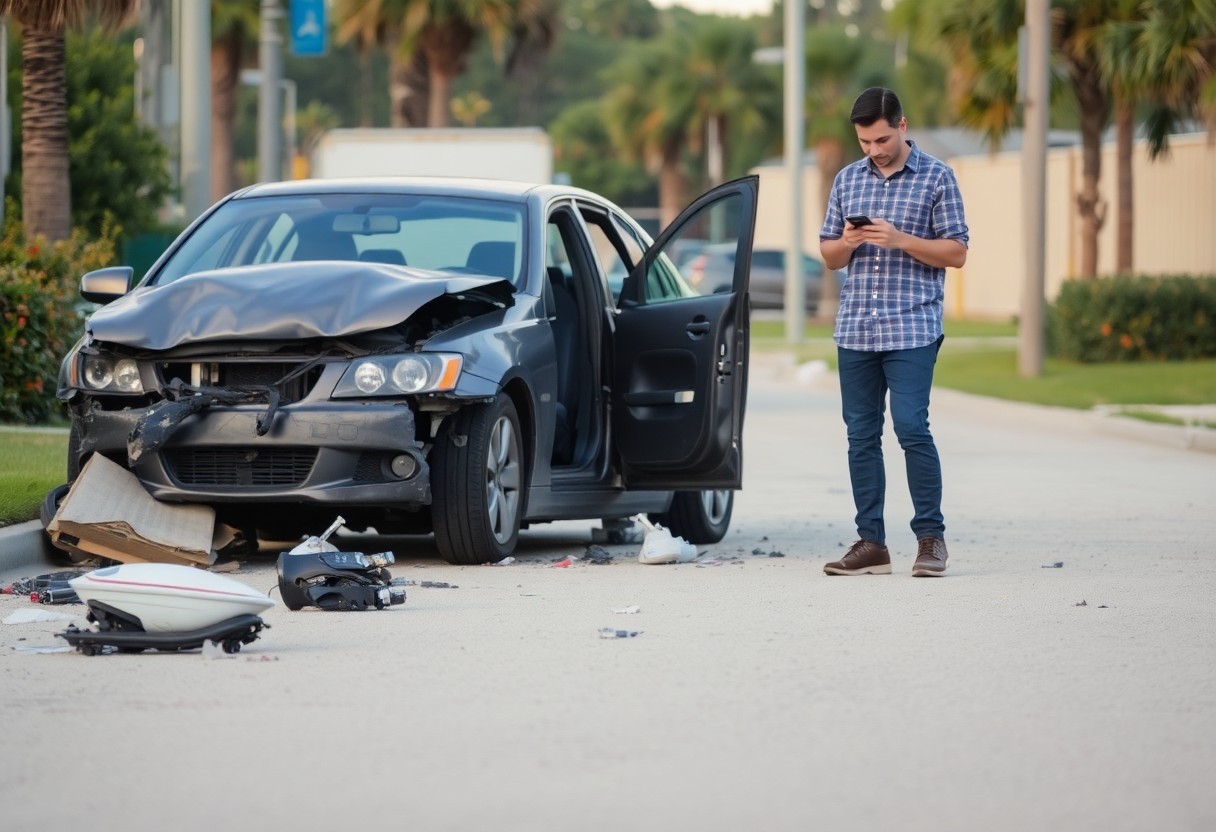Most car accident cases in Tampa are shaped by unique local laws and regulations that can significantly impact your rights and potential compensation. Familiarizing yourself with these specific legal nuances can empower you during an accident claim process. From comparative negligence rules to personal injury protection (PIP) coverage requirements, understanding how these factors play into your case can ensure you navigate your situation effectively. Stay informed to better advocate for yourself and protect your interests when facing the aftermath of a car accident in Tampa.
Florida’s No-Fault Insurance System
Before stepping into car accident cases in Tampa, it’s important to understand Florida’s unique No-Fault Insurance System. This system requires drivers to maintain personal injury protection (PIP) coverage, allowing you to receive benefits regardless of who caused the accident. This approach can significantly impact how you handle claims and recoveries after a car accident.
Personal Injury Protection (PIP) Requirements
Insurance coverage in Florida mandates that drivers carry minimum PIP coverage of $10,000. This insurance covers medical expenses, lost wages, and other related costs after an accident, ensuring you have immediate financial support. However, if your damages exceed this amount, you may need to explore further compensation options.
Limitations and Thresholds for Pursuing Additional Claims
One significant aspect of Florida’s laws is the limitations and thresholds in place for pursuing additional claims beyond PIP benefits. This means that you may only seek compensation from the at-fault party if your injuries meet specific criteria, such as permanent injury, significant scarring, or death. Understanding these thresholds is important for navigating your claim successfully.
System parameters can restrict your ability to claim damages effectively. If your injuries fall below the defined threshold, you may only receive limited benefits through your PIP coverage, despite potential losses. It’s vital for you to assess your injuries carefully and seek legal guidance to determine if you meet the necessary requirements for pursuing a personal injury claim against the at-fault driver. By doing so, you can maximize your compensation and cover the costs related to your accident.
Tampa’s Unique Traffic Patterns and Accident Hotspots
Assuming you’re driving in Tampa, you’ll quickly notice the city’s distinctive traffic patterns that significantly affect accident rates. With bustling streets and several intersections known for high accident frequency, being aware of your surroundings can make all the difference. Unique factors like heavy tourist influx and traffic flow can contribute to elevated dangers on the road.
Urban Congestion Challenges
Between sprawling neighborhoods and busy commercial districts, you may find yourself navigating through urban congestion, especially during peak hours. This consistent buildup can lead to frustrations, causing drivers to engage in unsafe behavior, ultimately increasing the likelihood of accidents.
Tourist Traffic Considerations
Patterns of seasonal tourism in Tampa can significantly impact local road conditions. As you drive through popular attractions, the influx of out-of-town drivers who may not be familiar with the area can create sudden stops and unpredictable movements, contributing to a higher incidence of accidents.
And as a driver, it’s important to factor in the influx of tourists, who may be distracted and unfamiliar with Tampa’s roads. During peak tourist seasons, popular destinations like Ybor City and Busch Gardens see heavy traffic, making vigilance vital. Be prepared for potential challenges, such as unexpected lane changes and pedestrian foot traffic, which are common in highly trafficked areas. Awareness and caution can significantly enhance your safety as you navigate these tourist-heavy hotspots.
Weather-Related Factors in Tampa Accidents
Clearly, the unique climatic conditions in Tampa play a significant role in increasing the risk of car accidents. Factors to consider include:
- Heavy rainfall
- Tropical storms
- Hurricane season
Recognizing the impact of these weather-related factors on accident frequency can help you understand your rights and responsibilities when navigating these challenging conditions.
Tropical Storm Impacts on Liability
Against the backdrop of a tropical storm, liability issues can become complex. When conditions deteriorate rapidly, determining fault can depend on whether drivers took reasonable precautions or failed to adapt to the changing weather.
Rain and Visibility Issues Specific to the Region
Before hitting the road, be mindful that Tampa’s frequent rains can severely affect visibility and road conditions. This creates a volatile environment for drivers, leading to an increase in accidents.
And with heavy rains, visibility can drop drastically, putting you at a higher risk for collisions. Wet roads can become slippery and hazardous, making it crucial to adjust your driving speed and distances. Utilizing your wipers and headlights appropriately is vital, as is being aware of other drivers who may not be as cautious. Accurate knowledge of weather conditions can contribute to safe travel, ensuring you minimize accident risks during adverse weather.
Comparative Negligence in Florida Car Accident Cases
Once again, understanding comparative negligence is vital when navigating car accident cases in Florida. Under the state’s laws, your degree of fault in an accident will directly impact the compensation you can recover. Florida follows a pure comparative negligence system, meaning that your compensation is reduced by the percentage of fault assigned to you. If you are found to be 25% at fault, your damages will be reduced by that same percentage.
How Fault Percentage Affects Compensation
Compensation
Compensation in car accident cases is determined by the amount of fault assigned to you. If you share 20% of the blame for the accident, your damages might be reduced by that 20%, resulting in lower financial restitution. This means it is important for you to build a strong case demonstrating your level of involvement in the incident, as the more fault you are assigned, the less compensation you will receive.
Documentation Requirements for Establishing Fault
Affects
Affects establishing fault in a car accident case hinges on your ability to provide solid documentation. You will need to present evidence that supports your claim and clearly outlines the circumstances of the accident. This can include police reports, witness statements, and photographs of the accident scene, all of which will substantiate your position in the case.
Percentage of fault is often determined by the evidence you provide. For instance, police reports will generally contain an analysis of the accident scene, assisting in establishing a narrative of events. Additionally, witness statements can offer insights that corroborate your account of the accident. Photographs depicting the state of the vehicles involved, road conditions, and traffic signals also play a significant role. Together, these documents enhance your credibility and help shape the determination of fault in your favor.
Tampa’s Statute of Limitations and Filing Deadlines
For residents of Tampa, understanding the statute of limitations for car accident claims is vital to ensure your rights are protected. In Florida, you generally have four years from the date of the accident to file a lawsuit. Missing this deadline could result in losing your chance for compensation, so it’s important to take action swiftly.
Standard Timeline for Car Accident Claims
To navigate the complex landscape of car accident claims, you should be aware of the standard timeline involved. Typically, after an accident, you have a few days to report the incident, followed by a couple of weeks to gather evidence and consult with an attorney. Filing your claim within the four-year window is the next important step.
Exceptions and Extensions in Special Circumstances
Behind the general timeline are exceptions that may allow for extensions in certain situations. Factors such as injuries that are not immediately apparent or cases involving minors can affect your filing deadline, offering you a little more time to act.
It’s important to know that various exceptions exist that could extend your deadline. If the injured party is a minor, the statute of limitations often starts when they reach adulthood, giving you until they turn 18 to file. Additionally, if the accident results in your incapacity, you may qualify for an extension until you regain the ability to pursue your claim. Situations where a defendant leaves the state or is otherwise unreachable can also pause the countdown on your filing window. Always consult with an attorney for personalized guidance on your unique circumstances.
Local Court Systems and Jurisdiction Considerations
After understanding the nature of your car accident case, it’s crucial to grasp the local court systems and jurisdiction considerations in Tampa. Tampa operates under Hillsborough County, which oversees various types of cases, including personal injury and motor vehicle accidents. The venue of your case can significantly affect the outcome, so knowing where to file your claim and what local rules apply can be vital in navigating the legal landscape effectively.
Hillsborough County Court Procedures
Before initiating your car accident case, familiarize yourself with the Hillsborough County court procedures. The local court system has specific rules regarding filing timelines, document submissions, and court appearances that you must comply with. Understanding these procedures will help ensure that your case moves forward without unnecessary delays.
Tampa Municipal Requirements for Accident Reports
Procedures for reporting car accidents in Tampa are specific and must be followed to protect your rights. It’s crucial to obtain an accident report, which not only documents the incident but also holds legal weight in establishing accountability. Failure to file an appropriate report can jeopardize your case, and not having a complete record may lead to challenges in securing compensation.
And, you should be aware that Tampa imposes specific municipal requirements for accident reports, which include reporting the incident to law enforcement if injuries or significant property damage occur. Ensure that you collect all necessary information at the scene, including witness details and insurance information. This documentation serves as a critical piece of evidence that supports your claim. Adhering closely to these requirements can bolster your case in front of the courts, leading to a more favorable outcome.
To wrap up
Upon reflecting on Tampa car accident cases, you can see how local laws distinctly influence the outcomes and procedures involved. Your understanding of Florida’s unique regulations, such as comparative negligence and specific insurance requirements, can significantly affect your approach to claims and legal representation. By being informed about these local nuances, you’re better equipped to navigate the complexities of your situation and maximize your potential for a successful resolution. Tailoring your strategy to the specifics of Tampa law not only empowers you but enhances your ability to achieve favorable results in your case.


















